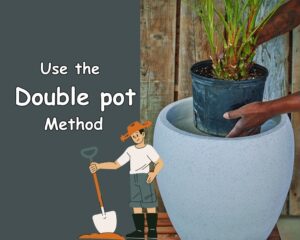If you want to repot your houseplant into a cachepot, here you will find the pro tips for repotting plants in pots without drainage holes.
Planting in pots without drainage holes has several advantages that encourage indoor gardeners to use them. Read “Why do some plant pots not have holes?”, to know more about them. If you are a fan of planting in a cachepot and want to repot your beautiful houseplant into a pot without holes, you should know planting in this kind of planters is different from the pots with holes.
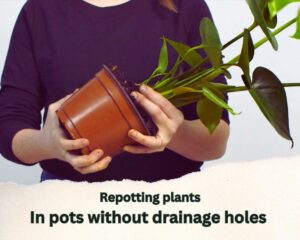
Here, I will first tell you about the importance of drainage for indoor plants, then I will show you how to repot into a planter without drainage holes and will provide you pro tips to create drainage and reduce root rot in a cachepot.
If you are ready, let’s start.
The importance of drainage for indoor plants
Before we dive into repotting a plant without holes, you should know about the necessity of drainage in indoor plants.
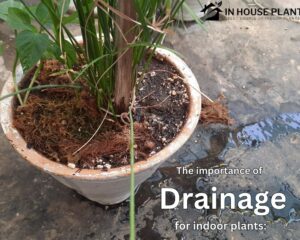
The roots need air for breathing, if you fill the holes of soil with water (in soggy soil) they cannot breathe and will rot. The drainage removes the excess water from the soil.
The airflow inside the soil will improve the root system. In soggy soil, the airflow will decrease and the roots cannot grow best.
During watering and fertilizing you add salt to soil. these salts will remove from the soil by drainage. Without it, they accumulate in the soil and will poison your plant.
Hence, when you repot your indoor plant into a pot without drainage holes, you have to create drainage in other ways. So, keep reading to show you how to do it.
How to repot a plant without drainage holes
Most people ask “Can I repot a plant without drainage holes?” In the following, I will show you how to do it. you should perform the following instruction to be successful. At the end of this recipe, I will tell you a golden tip too.
1- Select the right size for your pot without holes
As you know in every repotting you have to use a pot that is only 1-2 inches wider than the previous pot. this rule is more important in repotting planters without drainage holes. Because when the root system cannot fill the pot space, more soil means more moisture lasting longer. It is a critical factor in pots without holes because the extra wet cannot drain from the bottom of the pot.
2- Select the right shape for a new pot without drainage holes
The tall pots are more appropriate than the shallow pot when your planter doesn’t have holes. In the following, I will show you that in the pots without holes you have to make a tank in the bottom of the pot to store the extra water. After watering, the extra water will accumulate there and get away from the root space. When you use a tall pot, you have more space for building a storeroom.
3- Clean and disinfect the cachepot
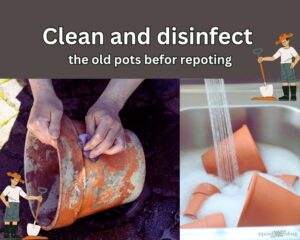
It will be important when you want to use an old pot. after choosing the correct pot for your plant, if you want to reuse an old cachepot, you have to follow the below instruction:
- First, if you spot the mineral deposits, try to scrub them away with a wire-bristle brush. They can poison your plant.
- In addition, you have to disinfect your pot with a disinfecting solution (one part bleach and nine parts water for ten minutes), wash pots with a solution of water and dish detergent and finally rinse the pots perfectly.
4- Add drainage rocks in the bottom of your pot
It is time to build a tank in the bottom of your cachepot to store the extra water into it. we will do it by adding the drainage rocks in the ¼ of your pot without holes. You must disinfect the rocks before adding to the pot, in the same way as mentioned above for the pot.
Now your depot is ready, let’s make a roof for it. keep reading.
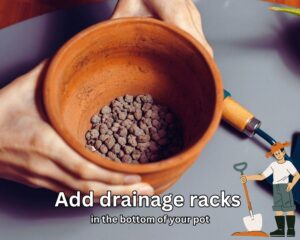
5 Add a thin layer of activated charcoal
Activated charcoal has a naturally absorptive property, which means that this thin layer will help you to absorb more extra water.
In addition, it has antifungal and antibacterial activity. It is a reward to you especially when the root rot is a critical problem in pots without drainage holes.
6- Add soil with a high drainage property.
Put a few inches of soil in your pot. you have to improve the drainage property of soil by adding the “Soil Amendments”. The most common soil amendments are including:
- perlite
- pumice
- vermiculite
- orchid bark
- horticultural charcoal.
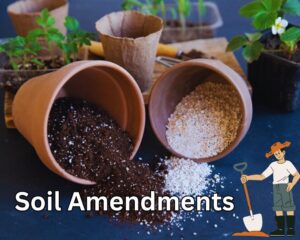
7- Prepare your plant before repotting
You have to before placing your plant into its new pot, you have to prepare it. follow the below instruction:
- Water your plant a few hours before repotting to its root ball come out easily.
- Remove the plant from its pot carefully. You should hold your hand over the top of the pot, and keep around the plant’s stem with oy other hand. Then turn the pot on its side before backing it.
8- put your plant into a new planter without holes and fill the pot with good drainage soil.
Pro tips to plant in a pot without holes
After you find out how to repot into a planter without drainage holes, you should know about points that are critical for the healthy growth of your indoor plant into a cachepot. In the following, I give you a brief overview of them. I recommend reading “Are pots without drainage holes bad?” to find out more details on this issue. let’s continue.
How do water plants in pots without drainage holes?
In the following, you can find two practical tips about watering plants in planters without holes.
1- Avoid over-watering:
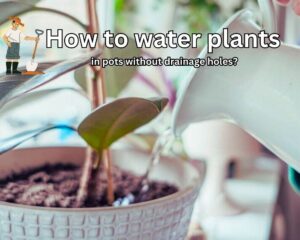
It is a critical option to be successful in planting inside a cachepot. You have to avoid over-watering and if you feel add a lot of water to your plant, you must tip the pot to the side and allow the excess water to spill out. You may lose a few of the topsoil too. don’t worry and add new soil again.
2- Water your plant slowly
In pots without holes, it is very important to give your plant its water intake without adding extra water. When you water slowly, it spread through the soil instead of passing the length of your pot quickly and pooling at the bottom. Hence the root system can absorb almost completely a few amounts of water that you add.
Read “The best practice for Watering plants in pots without drainage” to give you more tips on this issue.
Avoid putting your plant outdoors
When you place your plant outdoors, it is at the risk of over-watering during rain. You should take note that after rain the extra water doesn’t drain from a cachepot and stay into it. it will cause root rot.
Use indoor plants that can grow in pots without drainage holes
You should know only several plants are appropriate for planting in pots without holes. You must note it before repotting your plant into a pot without holes. Read the following articles to find a comprehensive list of them based on various categories.
- Flowers that don’t need drainage holes
- What hanging plants don’t need drainage?
- Herbs that don’t need drainage
- Succulents that don’t need drainage
- Small indoor plants without drainage holes.
| The Golden Point
|
Conclusion
Here you gained a comprehensive guideline for repotting plants in pots without drainage holes along with valuable directions. Do you think the above instruction will work well? Have you ever experienced planting in pots without holes? Can you add other points to the above list? Please share your experience and knowledge with us below this page. in addition, please feel free to ask your questions and tell us about your problems. I will respond to them as soon as possible.

Elahe Rabiei
Hi, I’m Elaheh. My Academic major is plant protection, and houseplants are my expertise. As a houseplant lover, my house is full of indoor plants and it is my passion to take care of them. Hence, I’m here to share my knowledge and experience about growing healthy houseplants. I am also a plant protection advisor, so feel free to ask me any questions you may have.


